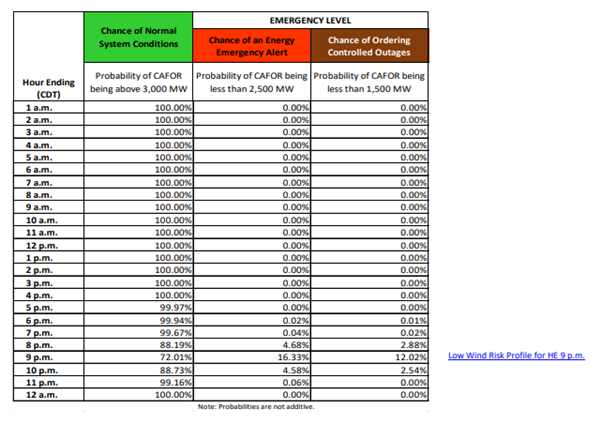News
better business decisions
Posted 1 year ago | 2 minute read

Risk of EEA’s in August: ERCOT
Modeling results have indicated an elevated risk of ERCOT having to declare an Energy Emergency Alert (EEA), or begin to order controlled outages to maintain grid reliability during August with hourly probabilities peaking at about 16%.
In the latest MORA report (Monthly Outlook for Resource Adequacy), published on June 7th, found that in August, the energy demand throughout the state of Texas could reach as high as 78,000MW, which is just under the state’s projected supply of more than 81,000MW for the month.
The peak electricity demand for August is forecasted to be 81,805MW, including a 595MW adjustment for large loads. ERCOT expects the total installed capacity to increase by 1,552MW from July to August, mainly due to new solar, wind, and battery storage projects.
The MORA report outlines the following notable developments:
- Solar – An additional 1,080MW
- Wind – An additional 453MW
- Battery Storage – An additional 141MW
- Diesel – An additional 10MW
- Gas-fired Sources – A net decrease of 132MW due to updated ratings for synchronized resources
The monthly capacity reserve margin, expressed as a percentage, is 17.9% for the highest risk hour (hour ending 9pm). The ratio of installed dispatchable to total capacity is 59%. The ratio of available dispatchable to available total capacity for the hour with the highest reserve shortage risk, hour ending 9pm is 83%.

Source: ERCOT

ERCOT alerts…explained
During the extreme summer heat or volatile weather conditions in Winter, Texas’ electrical grid can be put under strain. To help manage the supply of electricity with the demand, the grid operator ERCOT may ask Texans to conserve power during peak hours. At other times, they may issue warnings of conditions that may require future conservation or action. But what do they all mean and what could we expect for the 2024 summer peak period?
Learn more







